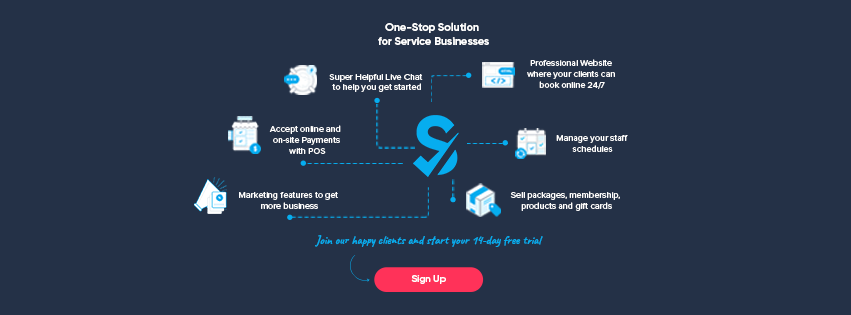How to Take Your Small Business to the Next Level

This post is also available in:
![]()
![]()
![]()
![]()
Starting your own business is something most of us want to do at least once during our working lives. Stories of individuals making it big through a combination of hard work and dedication inspire us to try walking the path of the solo-entrepreneur.
The allure of becoming a one-man operation is the fact that you can assume full control of all aspects of your business, allowing you to tinker with every small detail in order to arrange everything to your liking. With that being said, managing a small business as an individual has its own share of difficulties, and chief among them is growth.
It usually takes all your effort just to keep your business up and running, so you end up with little energy to devote to expansion. The challenge is real, but it is by no means insurmountable, provided you take your time and play things smart.
To help you get started with taking your business to the next level, we wrote a short primer on the topic that you can find below.
Planning
In the world of business, everything starts with a plan. Without one, you will be forced to make important decisions on the fly, which is something you should avoid at all costs while pursuing long-term growth.
Every business plan should start with a goal. Setting your sights on a particular set of objectives will help you determine the means you need to accomplish them. Growth-related business goals can be broken down into the following categories:
- Acquiring a bigger market share – becoming the dominant player in a particular commercial niche will make your business more resistant to marketplace fluctuations.
- Improving revenue – increasing profits, keeping down costs, and maintain a positive cash flow will give you a bigger budget, which you can then use to further expand your operation.
- Increasing productivity – with increased productivity, you will be able to achieve better results with less work, giving you more time for both private and business-related matters.
- Stronger branding – developing a recognizable brand is the key to staying relevant in a market where new companies are emerging on a daily basis.
- Industry leadership – becoming an industry leader in your field will enable you to form partnerships with other companies.
Once you have your objectives down, you need to set up a system for tracking your progress towards accomplishing them. Take care to choose the appropriate key performance indicators (KPIs) for what you’re trying to accomplish. Common ones include:
- Customer Lifetime Value
- Return On Investment
- Customer Acquisition Rate
- Net Cash Flow
- Inventory To Sales Ratio
You can find a more comprehensive list of KPIs here.
Finance & Accounting
The next thing you should take a look at is your finances and accounting. Proper financial management is essential for moving your business to the next level.
First, you should officially register your business, turning it into its own distinct legal entity. While legislation varies somewhat from country to country, at the minimum you will need to choose a name, a location, and a type. In general, small one-man businesses need to register with their local and state governments.
Second, you should separate your personal and business finances. The easiest way to accomplish this is to have a separate account for each. Having a dedicated business account will help you with accounting, filing taxes, and keeping track of your profit. Consider opening an additional savings account for your business, as this will make it easier to obtain loans.
Finally, you should apply for a specialized business credit card, to keep your personal and business expenses separate. Business cards offer a whole range of benefits, including cash-back on business expenses, travel insurance, and extended warranties. A business credit card can also help you with your business credit rating.
Technology
Technology is your best ally when it comes to expanding your business operation. With the right kind of tech, your small one-man company can fight on equal grounds with bigger players. With that being said, you should take care to spend your technology budget wisely – it is easy to slip into a trend-chasing mentality with technology, and newer doesn’t automatically mean better when it comes to tech. There are two main benefits to using technology to enhance your business operation. One is the expansion of the array of problems you can solve, and the other is automation.

As a solo entrepreneur, the kind of work you can do will always be limited by your existing skill set. You may know how to create a product, manage your finance, and do basic promotion work, but you probably don’t know how to run an email marketing campaign, design product packaging, or sell your products online. This is where technology comes into play. By using specialized software, you will gain the ability to perform tasks in which you have little prior experience. For instance, by using CRM software suite, you can accomplish a whole range of sales, marketing, and customer support related tasks.
The other thing technology is good at is automation. Running a business always involves a whole range of boring, repetitive tasks, which are nonetheless essential for keeping your operation going. Fortunately, many of these tasks can now be performed automatically through software, giving you more time to focus on more pertinent issues. New marketing tools for small businesses are getting developed every day, so keep your eyes peeled and your fingers on the keyboard.
Promoting & Branding your small business
While not being directly tied to growth as such, marketing can take your business to the next level by more subtle means. Many successful brands owe their success to the clever marketing tactics they employed at some point during their development, and there is nothing stopping you from trying to do the same thing.
Before you decide on a marketing approach, you should first be clear about the kind of image you want to project. In other words, you need to develop a distinct brand identity for your business. Your brand identity is simply a collection of values that your business is meant to represent. These values should be consistent with each other, so as not to confuse potential clients and customers.
Once you settle on an identity, you can need to pick a marketing strategy that fits within your budget. First, decide if you want to use traditional marketing, digital marketing, or some combination of both. Traditional marketing methods include:
- handing out promotional materials such as leaflets, flyers, and brochures
- placing ads on billboards
- advertising on TV, radio, or in the newspapers
- holding talks at conventions
And many others. For a more exhaustive list, you can take a look at this article.
Digital marketing is a relatively new field in comparison, and It is constantly evolving. The main advantage of digital marketing is that it can be tailored to fit any budget. Digital marketing is too big of a topic to cover here in detail, but some of the go-to methods that small business use include:
- search engine optimization (SEO)
- pay-per-click advertising (PPC)
- email marketing
- content marketing
- influencer marketing
And this is just the tip of the iceberg. For a comprehensive guide on digital marketing, check out this article from Quick Sprout.
Conclusion
The success of a business always hinges on many interrelated factors. As a solo entrepreneur, it is up to you to get acquainted with them in as much detail as possible, and then implement measures for maximizing gains and curbing losses. We hope that our article has given you some ideas on where to start your journey towards growth, how to proceed when you encounter difficulties, and what you can expect in terms of results.




Comments
4 comments